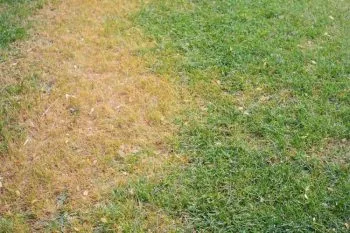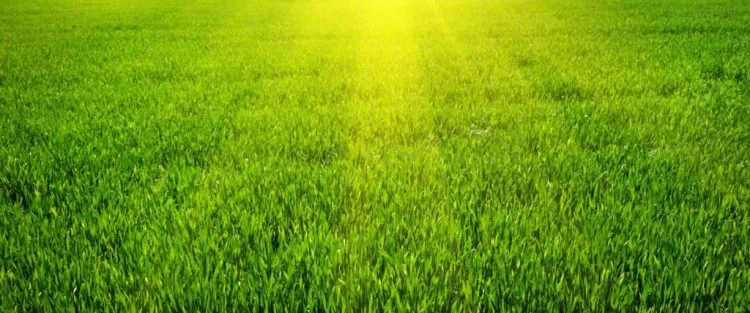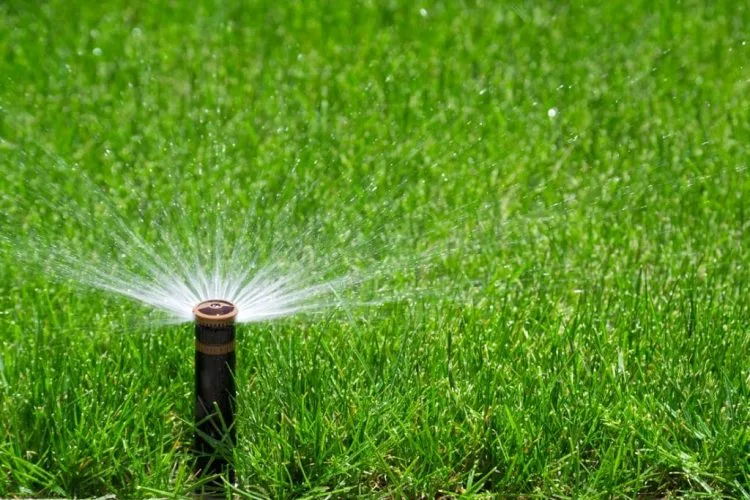Even the most experienced homeowners struggle with knowing how much and how often to water their lawn. People ask all the time, “Why isn’t my lawn lush and green? I feel like I’m doing all the right things.”
Even when you do all the right things, getting that thick blanket of grass can be tricky. Watering your lawn properly is one of the best things you can do for your lawn.
With over 30 years of experience, Evergreen Lawn and Landscape has gained the knowledge to expertly deal with any lawn care or landscaping issues.
If you want superior results, you have to get into a routine of best practices.
To help you get started, this blog post will discuss all the pertinent information you need to attain a healthy, vibrant lawn.
Time of day
The best time of day to water your lawn is in the early morning. When you water early in the day, the water has time to thoroughly reach the root system.
If you water mid-day when the sun is out, the water will evaporate before it fully reaches the roots. Another downfall to mid-day watering is that winds are high, which causes uneven distribution of the water.
Watering in the evening sets up a breeding ground for fungus, mold, and lawn diseases to develop. This happens because there is no sun out to evaporate any excess water.
How much water?
Ideally you’d like to get 1-1.5 inches of water per week. But, that’s not easy to understand how that translates to, “How long do I let my sprinklers run?” Or, “How Much Water is Enough?”
RELATED TIP: When to Fertilize Lawn in Fall in Texas
Watering should be done deeply (about 6 inches of soil should get wet) and infrequently (about twice a week or every 4-8 days.) It usually takes about 1 hour to water a lawn to a depth of 6 inches.
When you water deeply, the water fully reaches the grass roots. When the roots have been well-cared for, they establish themselves very well and are able to withstand many conditions.
A lawn with shallow roots will suffer from many obstacles such as drought, pests, and other lawn problems.
Tuna can test
Try the “tuna can” test to evaluate your lawn water management.
Set tuna cans (or rain gauges) sporadically across your lawn. Anywhere from 5-8 cans should be sufficient.
Place some cans close to your sprinkler heads and some cans farther away.
Turn your irrigation system on for 30 minutes.
Use a ruler to measure and record the amount of water in each can.
Add up the amounts and divide by the total number of cans. Most irrigation systems put out .5 inches of water in 30 minutes.
Use a tool like a screwdriver or spade to figure out how deep the water penetrated the soil. The tool will slide through moist soil. You will feel resistance when you reach dry soil.
Lastly, take the amount of water put out in 30 minutes and the depth of soil that it reached. From this, you can determine how long your sprinklers need to be on to water your soil 6 inches deep.
For watering information related to specific grass types, check out this article titled, “Watering Guidelines by Grass Type.”
RELATED TIP: Preparing Lawn for Fall
Puddling
Puddling in regards to a lawn, is when you find puddles of water throughout your yard after watering or rain storms.
Many problems can stem from puddling on your lawn. Standing water is an open invitation for mosquitoes to start breeding, as well as funguses and mold.
Reasons for puddling
- Overwatering
- Poor soil drainage
- Compacted soil
- Uneven terrain
- Lawn thatch
In North Texas, it is very common to have clay soil. Clay soil does not drain well and is often compacted.
Many North Texas homeowners have to deal with puddling. Dethatching and aerating your lawn will help reduce soil compaction a great deal.
Symptoms of a drought-stressed lawn

Keep your eyes open for any of the following symptoms with your lawn:
- Grass color may look blue/grayish
- Footprints will stay pushed down when someone walks across lawn
- Yellow or brown grass blades
- Compacted soil
- Bare spots
- Grass blades that are curling
- Weeds sprouting
If you notice any of these signs, it’s time to adjust your watering routine. Let Evergreen Lawn and Landscape do the hard work for you.
Call us today to get your yard on our lawn maintenance schedule.
Wrapping up

Research shows that almost half of homeowner water usage comes from watering the lawn. Which makes watering the right amount even more important.
Make that water count for something. Water the right amount at the right time.
If you follow the guidelines posted here, you will soon see that green, verdant lawn you’ve been dreaming about.



Comments (0)
Thanks for your comment!
Thanks for your feedback! Your comments have been successfully submitted! Please note, all comments require admin approval prior to display.
Error submitting comment!
There is a problem with your comment, please see below and try again.